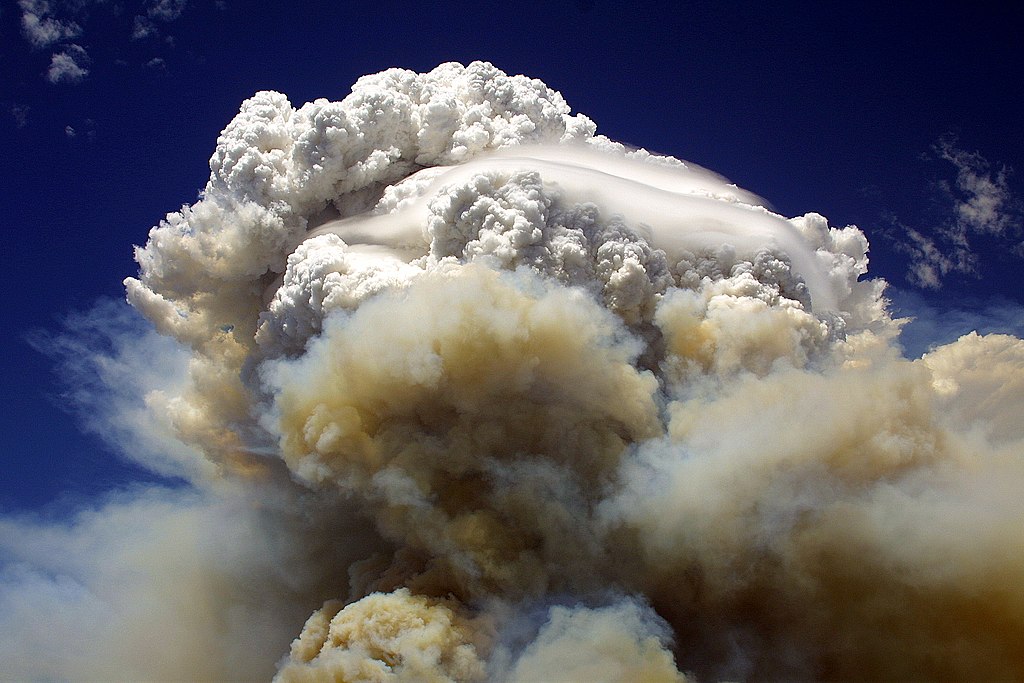
Pyrocumulonimbus cloud during the Willow Fire in Arizona, 2004. Credit: Eric Neitzel / WikiCommons
AGU News
AGU25 annual meeting scientific program online
The online scientific program and schedule is now available for the December 2025 meeting in New Orleans, Louisiana. [schedule] [press registration]
Featured Research
Simulation recaps how Creek Fire generated its own storms
Some wildfires burn so hot they create their own violent weather systems, injecting smoke as high into the stratosphere as volcanic eruptions. Pyrocumulonimbus storms form as plumes of hot air rise in powerful updrafts from the fires, cool and expand. Water condenses on smoke particles, forming clouds. For the first time, scientists successfully modeled the creation of these fire storm clouds in an Earth systems model, finding wildfire-driven vertical moisture transport is a key ingredient in these storms. This allows for predictions of where storms may break out during wildfires and how they might interact or change as climate change factors like increasing temperatures or decreasing rainfall change fire season. [Geophysical Research Letters study]
Aging European populations at high risk as floods increase in coming decades
Financial and mobility limitations put people older than 65 at higher risk when fleeing rising floodwaters. Most of Europe is expected to see increasing numbers of elderly populations in comparison to other age groups. A new study found Western and Central Europe face the largest risk when it comes to flood dangers facing their elderly population. Major river basins like the Danube, Rhine and Loire are projected to have 100% to 300% more floods in the next 75 years. Of the elderly population, over half are at high risk during these floods due to being densely settled and in middle- or lower-income groups. [Earth’s Future study]
Clouds on Venus may contain water
Data collected from a mission to Venus 45 years ago helped scientists understand what Venus’ clouds are made of. Scientists found evidence that the hot, dry planets may have water and iron suspended in their clouds. Until now, previous research concluded the clouds consisted of mostly sulfuric acid, but a reanalysis of gases taken in by the mission probe as it moved through Venus’ clouds found they may contain water, oxygen gas and iron sulfates. [JGR Planets study]
Kicked up dust from roads can limit how well peatlands operate
The construction and use of roads through peatlands throws dust into the air, settling into the surrounding peat. Researchers took samples of topsoil from three peatlands in Canada with nearby roads. The dust affected the chemistry of the peat up to 200 m (656 ft) away from the road. Higher levels and long-lasting dust had the greatest impact on the peat. Low amounts of likely improved carbon collection in the low-lying planets and decomposing materials that make up the peatlands. However, high levels of dust accelerated the decomposition of the planets and released carbon at faster rates. [JGR Biogeosciences study]
New evidence for a wobbly Venus?
The orientation of wind-blown impact deposits on Venus is not consistent with modeled wind directions, suggesting Venus’s rotation axis may have changed. [Eos editors’ highlights] [AGU Advances study]
#